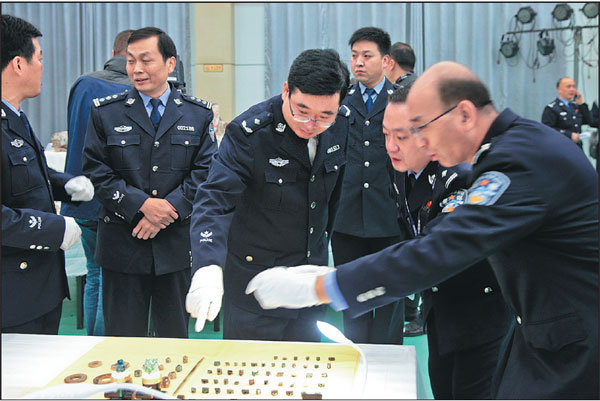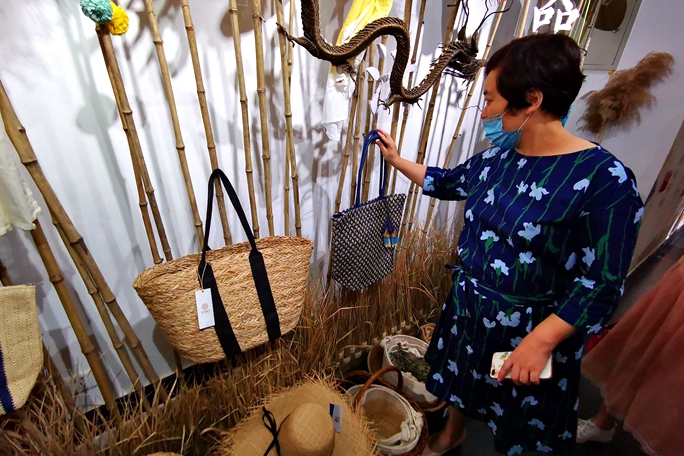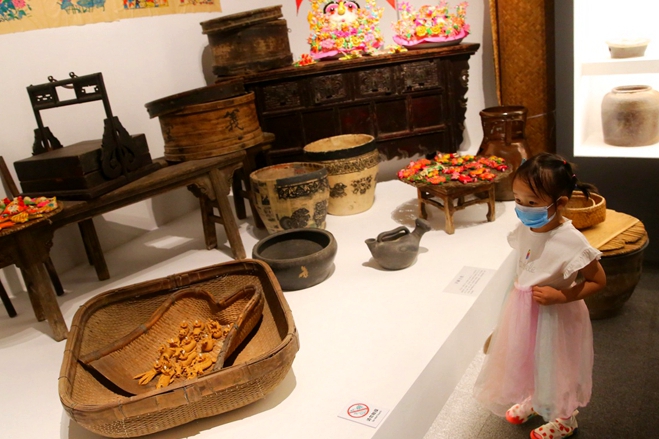Tomb raiders targeted to safeguard nation's precious cultural heritage
Authorities are determined to capture and punish professional criminals who break into ancient graves and steal age-old treasures, as Zhang Yan reports.
Turning a corner near a cornfield in Dahan, a village in Tengzhou city, Shandong province, brings visitors to a stone monument bearing the words "Dahan Village Relics", alongside a 3-meter-deep pit that is part of a despoiled ancient tomb.
According to the Ministry of Public Security, 20 members of two criminal gangs raided the site four times in less than three months last year, stealing 229 cultural relics, comprising 169 bronzes and 60 jade items.
In recent years, police across China have investigated more than 2,000 cases of tomb robbing every year.
"We are facing a grim situation in the fight against tomb robbers and the trafficking of cultural relics," said Chen Shiqu, deputy director of the Criminal Investigation Bureau at the Ministry of Public Security.
He said professional criminals comb the country searching for ancient tombs and stealing the artifacts, some of them priceless, buried within. The rash of thefts poses a serious threat to the safety of China's national heritage.
"Cultural relics are not renewable and cannot be replicated. If they are destroyed, the country will lose precious items of historical significance," he said.
"To safeguard the nation's cultural heritage, we have adopted a zero tolerance attitude toward these crimes."
Complex operations
The surge in tomb raiding is the result of rising demand and the large profits that can be made from the sale of cultural artifacts.
Statistics provided by the Ministry of Public Security show that between June and August, police across China uncovered 351 crimes related to cultural relics, smashing 79 criminal gangs and arresting 545 suspects.
The operations recovered 2,715 items, including 64 Grade I relics and 140 classified as Grade 2, which are potentially worth billions of yuan, although officials declined to provide accurate figures for fear of alerting thieves.
While 225 of the cases involved grave robbing, 70 others were related to the theft of historical relics, along with 27 instances of trafficking and 29 associated crimes.
Chen said the raids are usually professional, complex operations in which each member of a gang is allotted a specific task, including raising funds, committing the robbery, finding clients for the stolen artifacts, transporting and trafficking the items and finding ways of disposing of the profits.
Wei Yongshun, a senior official at the criminal investigation bureau, said, "Usually, the leader of the gang remains in the background to fund the operation, while a special technical adviser locates the burial site and organizes access to the tomb."
The graves are usually located by the use of modern technology, including electronic divining rods and metal detectors, while homemade explosives are used to gain entry. Other equipment can include walkie-talkies, night-vision goggles, powerful lights, oxygen cylinders and antiviral masks, he added.
According to Chen, the robbers always use assumed names when communicating and only keep the stolen artifacts for as long as they have to, preferring to sell them immediately or smuggle them overseas.
"Wealthy businessmen and even high-ranking officials, including some lawmakers and political advisers, buy items for their own collections, or the artifacts are smuggled to private museums or collectors overseas," he said.
Between March 2015 and July last year, police in 16 cities and counties across five provinces recovered 1,100 stolen items, including 222 classified as Grade 1 or 2 cultural relics.
A typical example occurred in July, when police in the provinces of Shaanxi, Gansu and Shanxi smashed eight criminal gangs and detained 91 people suspected of involvement in 96 cases of tomb raiding and trafficking of cultural relics, according to the Shaanxi Public Security Bureau.
Fifty-six of the suspects were arrested and 35 are still under investigation. Five of the suspects were listed as Class A fugitives by the Ministry of Public Security.
One, a 64-year old man surnamed Meng, was regarded as the most prolific tomb raider in Shaanxi.
He was known to have funded criminal gangs and employed technical personnel to gain access to tombs.
Having spent 40 years organizing raids and dealing in stolen artifacts, Meng had established relationships with many traffickers and private collectors, who paid high prices for the stolen artifacts.
He and his associates used instant-messaging platforms and email to post photos, identify items and settle prices, according to Wang Zi, an officer with the public security department of Chunhua county in Shaanxi.
"The assessments, sample ordering and discussions about prices and payment were all carried out online," he said, adding that some of Meng's customers were senior officials, including Zhang Moping, a former political adviser in Gansu province and Zhang Xuepu, a former political adviser from Henan province.
In April, Meng was apprehended by police outside his home in Xianyang city, Shaanxi. Officers confiscated more than 70 cultural relics Meng kept in his house, including the Jade Dragon, a national-level cultural relic, and a glazed hairpin, identified as a tribute to the Western Regions during the Western Han Dynasty (206 BC-24 AD).
According to Liu Lei, Wang's colleague in the Chunhua public security department, in the past 10 years, Zhang Moping had bought 100 items from Meng.
When Zhang Moping was arrested on suspicion of purchasing stolen relics, police confiscated more than 200 items discovered at his house. He is in criminal detention.
Zhang Xuepu fled to Canada when his crimes were uncovered, and police are working closely with their counterparts in the country to repatriate him.
Cooperation
Chen, of the criminal investigation bureau, said police face challenges when they attempt to collect evidence, capture suspects or identify smuggled relics.
"Usually the crimes are not discovered immediately, so we often arrive at the scene several days after the tomb has been robbed. That makes it very difficult to catch suspects or find the stolen objects. It's impossible to completely eradicate these gangs."
He said some traffickers buy or traffic cultural artifacts under the guise of managing antique shops.
"Flea markets have also become popular places to sell artifacts or arrange for them to be smuggled out of the country," he said.
"The suspects collude with their accomplices overseas to operate widespread criminal rings. The stolen artifacts are usually smuggled through Hong Kong or Macao before being taken to Taiwan, Canada, the United States or European countries to be traded."
To tackle the problem, the government will improve communications and strengthen law enforcement cooperation with relevant countries by conducting joint investigations or operations that target major gangs or individuals, he added.
Moreover, public security departments across the country will establish joint working mechanisms with government departments responsible for the protection of cultural heritage to share information, organize detailed deployments and conduct joint operations.
Under the Criminal Law of the People's Republic of China, people caught stealing artifacts face stiff punishments, while those convicted of breaking into ancient cultural sites or tombs of historical, artistic or scientific value, will receive sentences ranging from three to 10 years, and also face heavy fines, said Li Wei, from the Beijing Lawyers Association.
Serial offenders or those whose crimes are deemed extremely serious will be sent to prison for at least 10 years and some will be sentenced to life imprisonment.
According to Chen, tough punishments are the only way to stop the illegal trade: "In the end, only severe measures will curb the theft or trafficking of the nation's cultural heritage."
Contact the writer at zhangyan1@chinadaily.com.cn
|
Chen Shiqu (center), deputy director of the Criminal Investigation Bureau at the Ministry of Public Security, examines cultural relics dating from the Western Han Dynasty (206 BC-AD 24) that were confiscated from tomb robbers in November in Xi'an, Shaanxi province. Chen Lukun / Xinhua |


 Shandong Culture and Tourism Consumption Season
Shandong Culture and Tourism Consumption Season Culture, tourism sectors pick up in Shandong as epidemic wanes
Culture, tourism sectors pick up in Shandong as epidemic wanes

